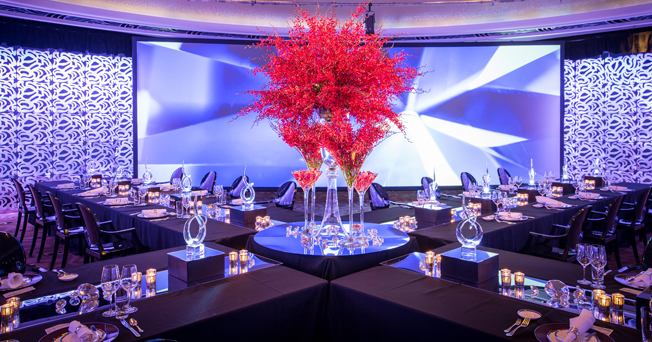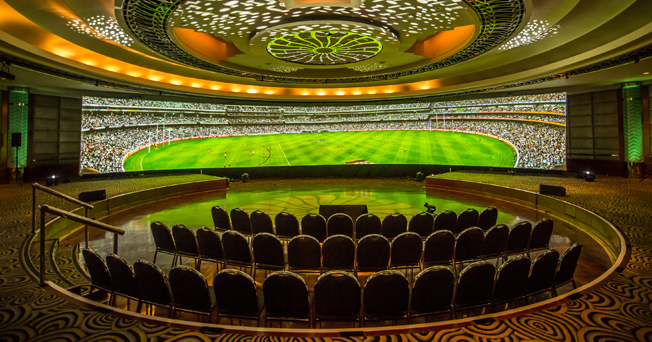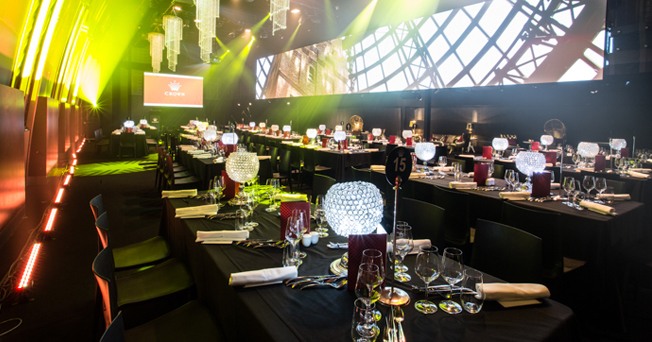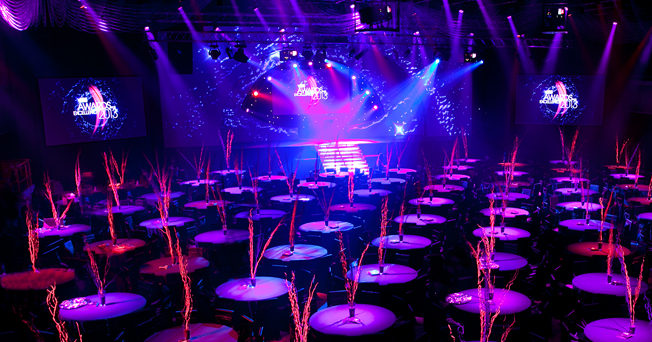The venue you choose for your event sets the mood and tone before your audience even steps inside. Its geographical location and reputation convey meaning to your invited guests before they RSVP. The process of getting there is shaping your attendee’s experience before they’ve experienced your message. Then there’s the myriad of practical considerations such as seating capacity, economic factors like equipment inclusions, and intangibles such as quality of service from its administration. With so much to take into account, where do you start?
Your event venue location
The first is location, where are your audience and what is going to work best for them? Bear in mind that closer isn’t always better – you might want to take them far from their usual places of work or residence to set your experience apart.
Remote locations
Remote locations such as holiday resorts are great if you have the budget and would like everyone’s attention completely to yourself for a few days, but these kind of events are only practical with large budgets, and are generally used to reward loyal customers or excellent sales staff.
Metropolitan areas
Back in the metropolitan areas, there’s a huge variety of traditional and non-traditional spaces to consider. For meetings, conferencing and staff training, the hotel function rooms and other dedicated event spaces have a solid offering that you’re probably already familiar with. Packages are standard, they understand the corporate market and they’ll provide a reliable service.
Space Is The Place
 Will the venue you’re considering accommodate the number of guests you expect?
Will the venue you’re considering accommodate the number of guests you expect?
Seated or standing, attentively listening or actively networking, you need to realistically assess if your audience will be too tightly packed, look lost in a cavernous space, or fit comfortably.
If you’re unsure about how you would set up the room then check our article on “how choosing the best seating style for our audience?”
Think of their physical comfort as well
- Is the venue adequately heated or cooled, depending on season?
- And what’s their physical experience of accessing the venue going to be like?
- Are there any likely bottlenecks in parking, pedestrian access, doors or lifts?
- Is there a disabled access?
Your event venue should match your message
 Each venue, whether convention centre meeting room or abandoned warehouse, has its own character and meaning inherent in its architecture and utilisation.
Each venue, whether convention centre meeting room or abandoned warehouse, has its own character and meaning inherent in its architecture and utilisation.
The meaning and purpose of your event are best known to you, so choose a venue that can enhance that. Are you trying to get a workforce or group of consumers excited about something new? Then take them somewhere new.
This can also work if you’re trying to get them to reappraise an existing product or idea; put it in a new context. If you are going to present material or processes that could be difficult, like how the company is about to be restructured, a familiar and conservative environment is advisable.
A proximity thing
When considering events with a large amount of attendees, like a major industry conference or exhibition, centrality, access and a well-serviced locale are essential.
The venue must be reasonable to commute to from the nearest airport, accessible by multiple modes of public transport and close to multiple hospitality options, including bars, cafes, restaurants and hotels. This enables both exhibitors, sponsors and attendees alike to get the most from their investment of time and money.
There are also downsides to well-serviced central venues. They can attract attendees who are there for curiosity only, diluting the value to serious participants.
Their proximity to many of your audience’s places of work can also make it more likely for them to either be called away on urgent business or not make it at all due to last-minute time pressures.
Create a checklist for your event
Comparing your options with location, capacity and character being equal, it’s time to look at what each venue can do for you in terms of included in-house equipment and service. This can be a very long list of little things that can add up to a lot of time and effort of they’re not already on-site; tables, chairs, screens, projectors, lights, sound, whiteboards, flipcharts, paper, pens, urns, plates, cups, cutlery – the list is almost endless.
Make a checklist of everything you expect or anticipate your guests will need to do while at your event and go through it with the venue to ensure that everything you need is either included, or quoted as an extra.
It’s all in the budgeting
Catering staff and costs are fairly easy to anticipate and understand. With a given number of people to serve and a set menu, any quote should be straightforward. Make sure you are aware, though, for the staffing aspects of the event that might not be so clear.
Do you need dedicated AV, staging and lighting staff? Don’t assume that a technical aspect of your event is ‘set and forget’ and won’t require labour outside of set-up and pack-down. Talk to the in-house or your external technical provider to be absolutely clear about what and who is necessary for a good show.
If you want more information about audio visual equipment you could check our blog post about our 8 audio visual tips to create a successful event.
Get clear on venue access
 If your event includes a stage , set, lecterns, projection screens, flat-panel displays, props or other physical elements, find out how much of it the venue can provide and if their stock is adequate.
If your event includes a stage , set, lecterns, projection screens, flat-panel displays, props or other physical elements, find out how much of it the venue can provide and if their stock is adequate.
For anything custom-built or hired for the event, check that it can physically fit in the venue. This doesn’t just mean whether its dimensions can be accommodated in the room you’re using, but also if the venue’s rigging points can handle the weight and that it can fit through the door or in the lift in the first place. It seems ridiculous, but some venues on floors above ground level are serviced only by very small lifts, severely restricting the size and type of equipment that can be (easily) bought into the space.
Weighty Issues
It’s factors like these that can have an unexpected impact on the cost of your event. Difficulties in the physical access to the venue mean longer call times for any staff employed to load in or out.
On large events with a lot of crew, an extra hour or two of time equates to many thousands of dollars in costs. If your event requires a truck’s worth or more of external equipment to be delivered to the venue, find out what the loading dock access and process to get to your specific space is like.
House staff and any contractor that has serviced the venue will be able to give you a fair assessment and adjust their quotes accordingly.
Understand the rigging capacity
 Another area to make sure that you have received expert advice is the rigging capacity of the venue.
Another area to make sure that you have received expert advice is the rigging capacity of the venue.
In-house equipment such as lights, sound and screens will already be safely hung, but if you’re bringing in extra gear, make sure that its weight isn’t going to exceed safe capacity once added. Similarly, if you’re coming into a ‘bare walls’ venue, ensure that it not only has the capacity to hold the weight of your equipment, but also has the basic infrastructure to rig from in the first place.Clear your sight-line
Related to the issue of rigging is sight-lines – anything you hang has the capacity to interrupt your audience’s view. Where you hang could well be determined by what is practical and safe, and not by what is convenient for your audience. All of these issues are best discussed with in-house staff and your external provider well before committing to a contract.
Don’t overlook the power
A final and often overlooked element is the amount of electrical power available in the venue.
This is most often an issue in older buildings, but it can arise as a problem if you’re bringing in a lot of lighting, audio and video equipment to a venue that doesn’t usually host events of that type. Power requirements are something that can only be determined and checked by specialists. The in-house staff and any external equipment provider will need to put their heads together in order to ensure that everything that needs to run, can.
Particularly heavy users of power include large LED screens, lots of large moving lights and PA systems designed to cover 1000 or more people. Add to this a requirement for extra heating and you may have to look at hiring in generators in order for the event to function.
Get a head start
At Encore Event Technologies we acknowledge that there is a lot to consider when finding the perfect venue for your event. To help get you started, we have developed Venue Locator, a clean, easy-to-use web tool. Simply choose your location, event type and amount of guests, and Venue Locator will return results tailored to your requirements!




You made a good point when you said that you must have a checklist of everything that you want your event to have, including any extras. My son will turn 7 this coming May 15, so I am looking for the right venue to hire for the party. Your tips will surely help me find a venue that can accommodate all the more or less 70 guests without breaking my budget.